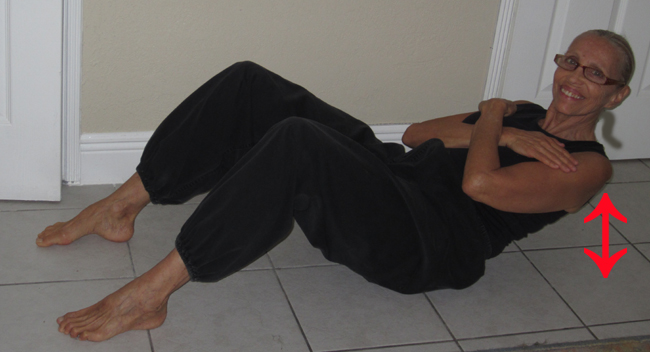7 Reasons For Workout Burnout- Then Do Tai Chi
7 REASONS FOR WORKOUT BURNOUT: THEN DO TAI CHI (ISSUE 125) April 15, 2014
By Diane Gold
How often do we get workout burnout and why do tai chi to avoid it or to fix it?
We are all about getting ourselves in shape, greedy to feel great and look spectacular. This is a good kind of greed because it keeps us healthy and our country flourishing. But, in my over 15 years of teaching martial arts (of which tai chi is one) and all my life watching people and their workouts, I have heard story after story about people’s workout history. There are only a few stories, even though we all, as individuals have our own.
 1. My Workout Is Boring.
1. My Workout Is Boring.
2. I Feel Empty And Disconnected From Myself When My Workout Is Over.
3. My Mind Is Not Relaxed After My Workout.
4. My Motivation Is Gone.
5. My Muscles Are So Tight From Working Out, I Move Like A Robot.
6. I Feel Totally Selfish When I I’m Finished.
7. I Want A Workout That Builds Me Spiritually.
These reasons may sound familiar. We can give ourselves reasons to quit or continue.
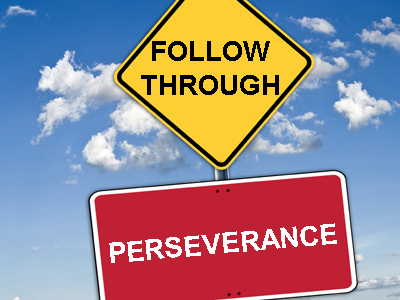 (1) If our activity doesn’t keep our attention, we quit. We usually are not taught the merits of follow through and perseverance, so we quit.
(1) If our activity doesn’t keep our attention, we quit. We usually are not taught the merits of follow through and perseverance, so we quit.
(2) If we don’t feel as if we have done something important, we quit. We usually don’t take the time to examine importance.
(3) If we are jittery and unrelaxed, we are forced to stop the behavior that’s causing it. We usually don’t know how to make the small adjustments needed to relax the situation.
(4) If we’re not motivated, we quit. Even if it’s one time, so often one missed session is enough to end the habit of working out.
(5) If our muscles are unnaturally tight, we may see it as counterproductive and quit. Most everyone has not been taught how to keep loose or to get loose.
(6) If we feel selfish, we may not like the feeling and we quit.
(7) If we see our workout as devoid of anything spiritual, we may feel plastic, unsubstantial and quit.
ENTER TAI CHI.
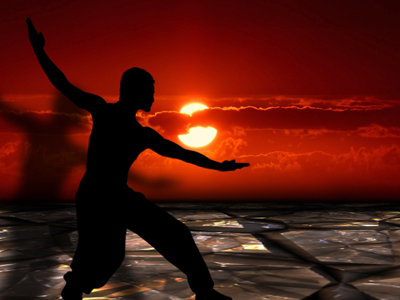 The art of tai chi is a system of movement that uses wave-like, circular patterns of moving the body, arms and legs. Its purpose is to connect everything that we do with the body with our mind and our spirit. It’s not a magic potion of movement; what it is is a very slow moving discipline that, because of its slowness, allows the mover to connect the movement to the mind. Its purpose is to teach the mind to act fluidly like the body movements. The physical moves are tools to connect us to ourselves.
The art of tai chi is a system of movement that uses wave-like, circular patterns of moving the body, arms and legs. Its purpose is to connect everything that we do with the body with our mind and our spirit. It’s not a magic potion of movement; what it is is a very slow moving discipline that, because of its slowness, allows the mover to connect the movement to the mind. Its purpose is to teach the mind to act fluidly like the body movements. The physical moves are tools to connect us to ourselves.
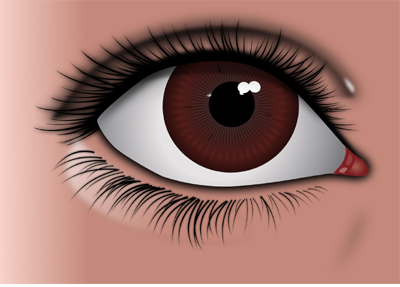 Here’s something to think about. When I am doing tai chi, the speed at which I am moving allows me to focus my attention on my movement. The movement allows me to focus on only 1 thing. This focus allows me to follow each body part, 1 at a time. I can, as well, connect my motion with the heat and the balance of my body, the expansion and compression of my lungs, the flow of my blood, and the space in which my body exists. I am in moving, martial meditation.
Here’s something to think about. When I am doing tai chi, the speed at which I am moving allows me to focus my attention on my movement. The movement allows me to focus on only 1 thing. This focus allows me to follow each body part, 1 at a time. I can, as well, connect my motion with the heat and the balance of my body, the expansion and compression of my lungs, the flow of my blood, and the space in which my body exists. I am in moving, martial meditation.
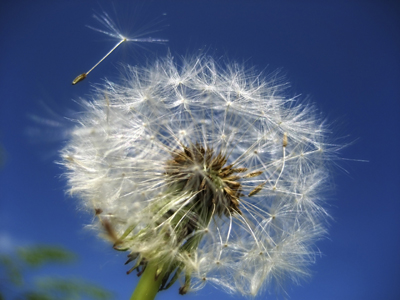 Picture the adventure of a dandelion seed, using the fibers of the dandelion flower to keep it airborn, and it is whisked away by a fluid stream of the wind. The ride is smooth with no sudden movement other than what the airstream provides for it. This fluidity likens it to the journey of tai chi, where we learn to follow the line of movement of one body part from its beginning to its end which leads it into a new beginning of the next body part. This rolling rhythm that is tai chi allows us to translate our wave-like action of our body to our mind, reducing or removing jerky decisions, panic or despair.
Picture the adventure of a dandelion seed, using the fibers of the dandelion flower to keep it airborn, and it is whisked away by a fluid stream of the wind. The ride is smooth with no sudden movement other than what the airstream provides for it. This fluidity likens it to the journey of tai chi, where we learn to follow the line of movement of one body part from its beginning to its end which leads it into a new beginning of the next body part. This rolling rhythm that is tai chi allows us to translate our wave-like action of our body to our mind, reducing or removing jerky decisions, panic or despair.
And yet, the standard joke in tai chi is this:
“If tai chi is for the mind, why are my legs shaking?”
The true answer is that tai chi uses the body to teach the mind. And the shaking will pass. It’s only mild discomfort on which we are not focusing.
When people do tai chi, they move throughout the session. So tai chi has the advantage of allowing the blood to continue flowing throughout the session, permitting easy self-monitoring of the body so that there are no strains and there are enhanced respiration and circulation without any impingements from closing the body off in any way.
Further, tai chi works to relax every muscle, tendon and joint by teaching focus on one movement or body part at a time. Eventually, the goal is to move while looking at nothing at all. But that takes time.
The very nature of tai chi, that we move everything simultaneously, that we focus on one body part at a time, that we feel our blood moving around in our body and learn to picture the air that surrounds us makes it ideal for someone who is looking for something more. The blood’s moving is our life energy or chi that we hear so much about. The slowing down of movement, the reduction of thought to only one thing (and then “no” thing) and our being able to feel our chi moving up and down our bodies and limbs allows us to have a spiritual, meaning part of ourselves, experience. We know we are not doing traditional working out because we feel especially tuned in to our bodies and our own essence at the same time.
For those special reasons, tai chi helps us to avoid workout burnout. Tai chi is always new because the moves we do reflect the way we are in our lives on that particular day, and we are always feeling a physical connection to our feet, our hands, our bodies, our fronts, our backs and heads when we do it. We remember more as we train ourselves to notice more. The fact that we are able to establish a strong foundation for ourselves allows us to see others in a compassionate, even protective, way. This foundational root takes away the feeling that we are doing our workout just for ourselves, alone, since we start to become kinder and wiser the more we do it. The objection to our doing a selfish workout dissolves, and we evolve.
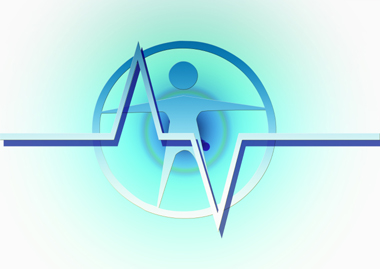 For all the reasons that we don’t burn out when we do tai chi, this old and sophisticated art offers solutions to people with a huge list of physical and emotional issues: memory disorders like Alzheimer’s Disease, muscle disorders, like Parkinson’s Disease, Anxiety Disorder, Chronic Organic Pulmonary Disease (COPD), Post-Traumatic Stress Disorder (PSD), Attention Deficit Hyperactivity Disorder (ADHD), cardiovascular disease, balance disorders, diabetes and more. And it’s a martial art that teaches self-protection, one-pointed focus, stress-free living and how to maximize health.
For all the reasons that we don’t burn out when we do tai chi, this old and sophisticated art offers solutions to people with a huge list of physical and emotional issues: memory disorders like Alzheimer’s Disease, muscle disorders, like Parkinson’s Disease, Anxiety Disorder, Chronic Organic Pulmonary Disease (COPD), Post-Traumatic Stress Disorder (PSD), Attention Deficit Hyperactivity Disorder (ADHD), cardiovascular disease, balance disorders, diabetes and more. And it’s a martial art that teaches self-protection, one-pointed focus, stress-free living and how to maximize health.
ACTION STEP
Consider doing tai chi. The training teaches you to move every part of you at a time. It’s always new because your movements change with understanding.
Go HERE to begin the inquiry process.
![]()
If you wish to share your story, please hit reply in your email program to be contacted.
![]()
FEEDBACK
We value your feedback very much.
Please leave a comment below.
Please LIKE us on the website and at
WarriorsOfWeight on Facebook.
You can also follow us on Twitter @warriorsoweight.
Thanks.
![]()
DIANE GOLD, PUBLISHER AND AUTHOR
Diane Gold, Founder of Warriors of Weight, Turning Habits Into Health, is a mentor in tai chi, kung fu and meditation, a music, fitness and stress expert, dedicated mom, studying plant-based nutrition and habit change.
She is excited to share some insight about workout burnout. She says,
“I have watched and experienced over and over the cycle of getting into a routine or habit and then, because of missing one instance of it, dissolving the routine for a new one. When we skip an activity or class once, we are beginning a new habit, that of feeling what it feels like to skip the activity and doing something else with that time. This starts the beginning fibers of a new routine which replaces going to the activity or class. When we skip the activity or class two times, it is sooooooo much easier to skip and put less importance in the third time and the fourth time. Pretty soon, the class is out of sight, out of mind; and we are on to the next routine.
“This is OK, as long as we know it is our choice and that is the right choice for us. If it is laziness, stop skipping, and get back to the original routine. And may the force be with you.”
![]()

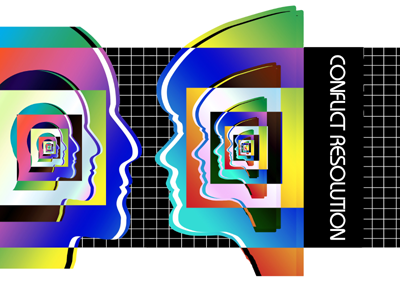
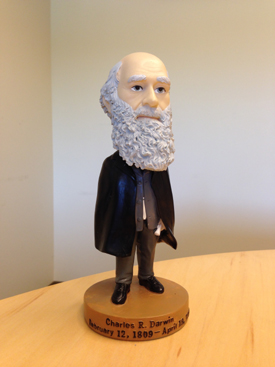 What makes the above quote a great definition is that Charles Darwin alludes to something similar in his Origin of the Species as did his predecessor, Jean-Baptiste Lamarck, 500 years before Darwin. They both arrived at the idea that traits can be passed down generationally even if they are acquired through acquired training of the previous generations. Another way of saying this would be that the offspring of parents who are trained in a certain behavior are born with the behavior and no previous training in the future generations.
What makes the above quote a great definition is that Charles Darwin alludes to something similar in his Origin of the Species as did his predecessor, Jean-Baptiste Lamarck, 500 years before Darwin. They both arrived at the idea that traits can be passed down generationally even if they are acquired through acquired training of the previous generations. Another way of saying this would be that the offspring of parents who are trained in a certain behavior are born with the behavior and no previous training in the future generations.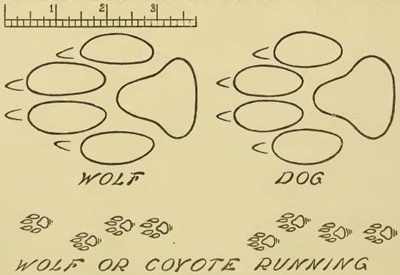 We can look at the domestication of one or two wolf species. The domesticated wolf became the dog, according to James Serpell, professor at University of Pennsylvania’s School of Vet Medicine in his 1995 The Domestic Dog. Through teaching the wolf pup of the wild wolf to be calm, gentle and social with humans; the offspring of the tamed wolf pups began to exhibit the gentler traits at birth, without any training.
We can look at the domestication of one or two wolf species. The domesticated wolf became the dog, according to James Serpell, professor at University of Pennsylvania’s School of Vet Medicine in his 1995 The Domestic Dog. Through teaching the wolf pup of the wild wolf to be calm, gentle and social with humans; the offspring of the tamed wolf pups began to exhibit the gentler traits at birth, without any training.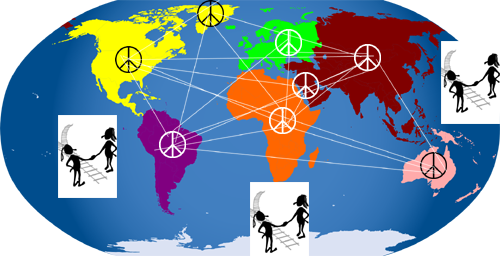 So, the way of our evolution has to do with the training we are given which, if ingrained in us well, can be passed down to our offspring or to their future generations from birth. What could exist is our own domestication, cultivating the habit of peaceful coexistence.
So, the way of our evolution has to do with the training we are given which, if ingrained in us well, can be passed down to our offspring or to their future generations from birth. What could exist is our own domestication, cultivating the habit of peaceful coexistence.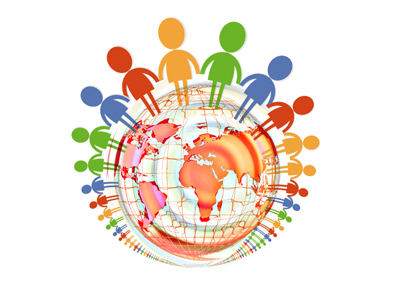 The point here is if we start role playing peaceful solutions to different circumstances when we are young, we will be very experienced at conflict resolution by the time we reach 25 when our voices can help run the world. We will recognize human rights violations and know how to use our voices against them using our peaceful methods. This means we may be interested in letting go of our old ways.
The point here is if we start role playing peaceful solutions to different circumstances when we are young, we will be very experienced at conflict resolution by the time we reach 25 when our voices can help run the world. We will recognize human rights violations and know how to use our voices against them using our peaceful methods. This means we may be interested in letting go of our old ways.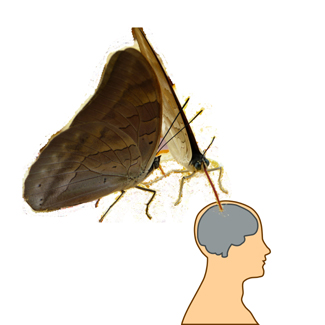
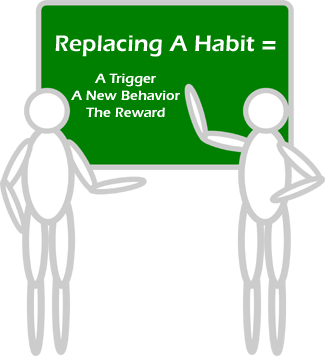 So, here’s this task we have for ourselves. We have a habit, and we want to replace it.
So, here’s this task we have for ourselves. We have a habit, and we want to replace it.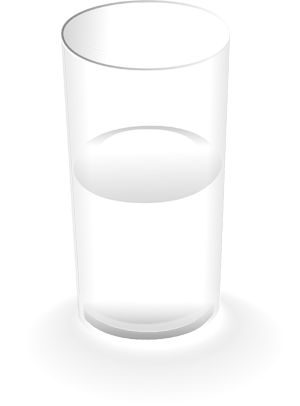 Consider the glass’ being half empty or half full concept. When the glass is full, we think of richness. The empty term, in Western terms, can speak to barrenness, although, in the Eastern way, emptiness is the way to abundance.
Consider the glass’ being half empty or half full concept. When the glass is full, we think of richness. The empty term, in Western terms, can speak to barrenness, although, in the Eastern way, emptiness is the way to abundance.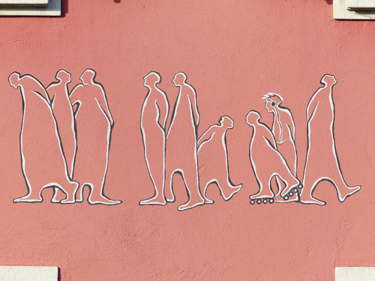 Be careful of the feeling of boredom. It can act as a built-in excuse for doing a certain behavior that is not good for us. We might think that if we had excitement rather than stagnation in our lives, we would not act out the behavior we wanted to change. We might even create the boredom to delude ourselves.
Be careful of the feeling of boredom. It can act as a built-in excuse for doing a certain behavior that is not good for us. We might think that if we had excitement rather than stagnation in our lives, we would not act out the behavior we wanted to change. We might even create the boredom to delude ourselves.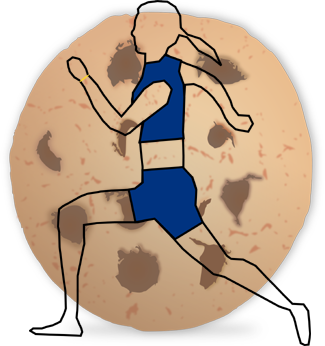 Let’s say we always get the urge to eat dessert. We can change our reaction to this trigger by planning another behavior in its stead, such as going jogging as soon as that urge is felt. This will begin the process of replacement. Repeating this behavior will turn it into a habit. By behaving consistently by jogging and not dessert eating, we will have replaced our old with the new behavior. Although this certainly is quitting acting out the old behavior from the sheer repetition of the act; it’s easier to accomplish by using the concept of “replace.”
Let’s say we always get the urge to eat dessert. We can change our reaction to this trigger by planning another behavior in its stead, such as going jogging as soon as that urge is felt. This will begin the process of replacement. Repeating this behavior will turn it into a habit. By behaving consistently by jogging and not dessert eating, we will have replaced our old with the new behavior. Although this certainly is quitting acting out the old behavior from the sheer repetition of the act; it’s easier to accomplish by using the concept of “replace.”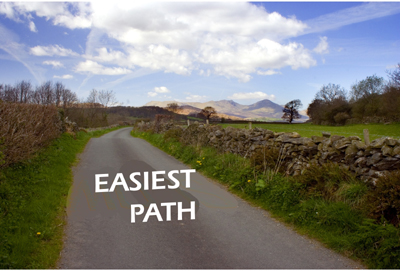 Of course, when we want to do something new in place of some old habit, we want to give ourselves the easiest path to follow. That path involves planning one simple action that will be repeated over and over again. It also requires saying “replace” instead of “quit.”
Of course, when we want to do something new in place of some old habit, we want to give ourselves the easiest path to follow. That path involves planning one simple action that will be repeated over and over again. It also requires saying “replace” instead of “quit.” We develop habits based on how certain actions make us feel. Whether we wear designer clothes, keep our hair immaculate or stay fit because we enjoy people’s staring at us; we act out behaviors regularly to achieve these good feelings, aka rewards. The cue, which is the original feeling that makes us do a behavior urges us to work so we have access to buy clothing, get our hair done, so we look how we like. This urge also pushes us to work out so that our bodies look good, which gives us the end result: the reward of having people acknowledge our beauty. Appearance
We develop habits based on how certain actions make us feel. Whether we wear designer clothes, keep our hair immaculate or stay fit because we enjoy people’s staring at us; we act out behaviors regularly to achieve these good feelings, aka rewards. The cue, which is the original feeling that makes us do a behavior urges us to work so we have access to buy clothing, get our hair done, so we look how we like. This urge also pushes us to work out so that our bodies look good, which gives us the end result: the reward of having people acknowledge our beauty. Appearance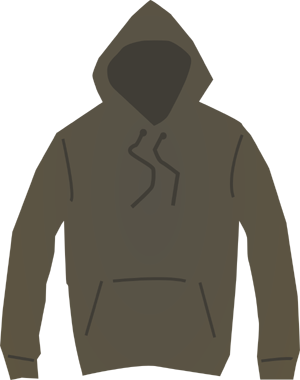 These are only examples of appearance habits we may have. There are others of us who specifically wear clothing to make us invisible, since we don’t like it when people stare. And there are others of us who do not consider what people think; they are busy with their own lives and work.
These are only examples of appearance habits we may have. There are others of us who specifically wear clothing to make us invisible, since we don’t like it when people stare. And there are others of us who do not consider what people think; they are busy with their own lives and work.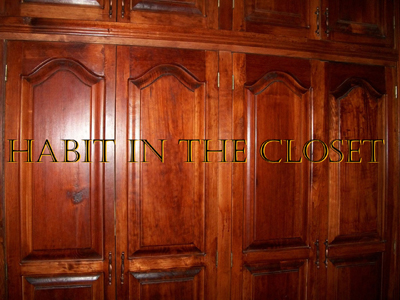 When we choose to change one of our habits, we replace the habit that was there with a new one. The old one is still there, but it is a “habit in the closet,” so to speak. As long as we are doing a new behavior and not opening the closet, the habit will stay put. For as long as we choose. Habit In The Closet
When we choose to change one of our habits, we replace the habit that was there with a new one. The old one is still there, but it is a “habit in the closet,” so to speak. As long as we are doing a new behavior and not opening the closet, the habit will stay put. For as long as we choose. Habit In The Closet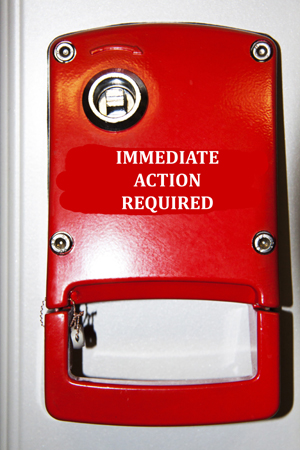
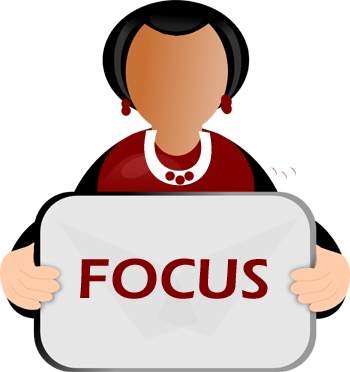
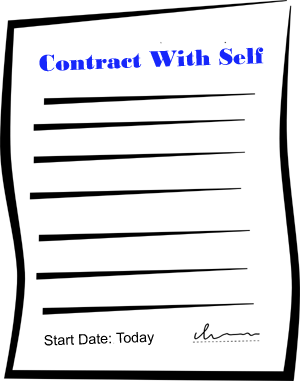 1)
1)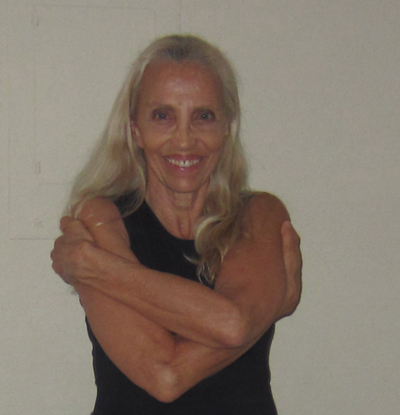
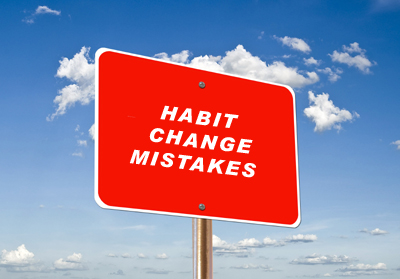 Of course, we don’t. We have every intention of carrying out our newly designed plan that we’ve been considering for some time. We have the motivation, and we know all we have to do is,
Of course, we don’t. We have every intention of carrying out our newly designed plan that we’ve been considering for some time. We have the motivation, and we know all we have to do is,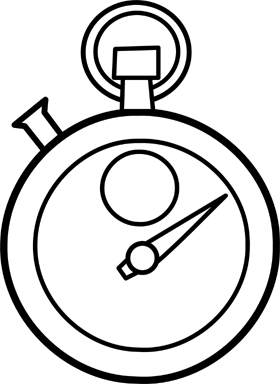 a)
a) 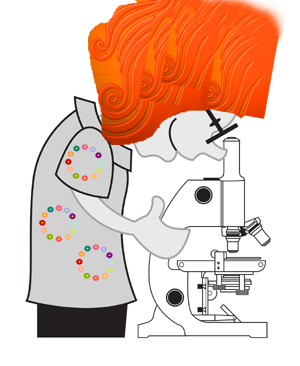 Use a supplement without researching its research and realizing that the referred to research isn’t public, is disorganized, was done using inconclusive method, doesn’t exist, is too old, was mismanaged, was word of mouth, used evidence-based information based on a control group of 30 people on which all world info is based, was gathered by the manufacturer and publicized in a magazine published by the manufacturer.
Use a supplement without researching its research and realizing that the referred to research isn’t public, is disorganized, was done using inconclusive method, doesn’t exist, is too old, was mismanaged, was word of mouth, used evidence-based information based on a control group of 30 people on which all world info is based, was gathered by the manufacturer and publicized in a magazine published by the manufacturer.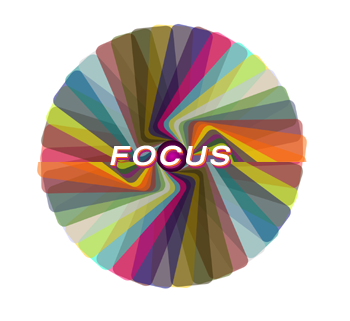 We need one-pointed focus to embark on any strategy. It’s hard enough without our giving ourselves scattered mind.
We need one-pointed focus to embark on any strategy. It’s hard enough without our giving ourselves scattered mind. b)
b) 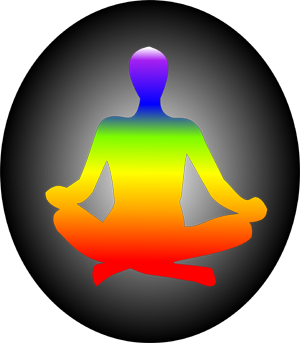 Join a gym, a dance class, meditation session now, even though you don’t want people to see the many rolls of fat you have. Waiting means not progressing, so go, go, go today!
Join a gym, a dance class, meditation session now, even though you don’t want people to see the many rolls of fat you have. Waiting means not progressing, so go, go, go today!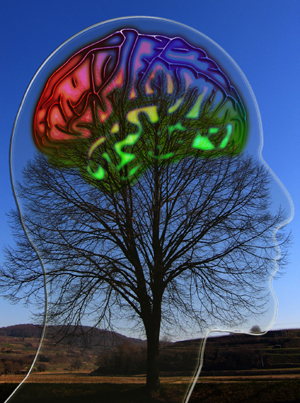
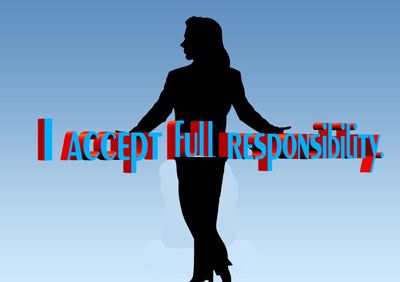 In the previous article in this series (June 24, 2013), I mentioned I was still looking for a primary care provider. I have found her. It is I, an unlicensed, non-medical person who knows a lot about nutrition and mind, body, spirit fitness. So far, I care the more about my own care than anyone I have found; I don’t treat myself like just another chart; I know the details of my case without having to look at a chart which is brief, at best; I have done research on nutrition and fitness and body processes and interactions that no medical personnel I know has done.
In the previous article in this series (June 24, 2013), I mentioned I was still looking for a primary care provider. I have found her. It is I, an unlicensed, non-medical person who knows a lot about nutrition and mind, body, spirit fitness. So far, I care the more about my own care than anyone I have found; I don’t treat myself like just another chart; I know the details of my case without having to look at a chart which is brief, at best; I have done research on nutrition and fitness and body processes and interactions that no medical personnel I know has done.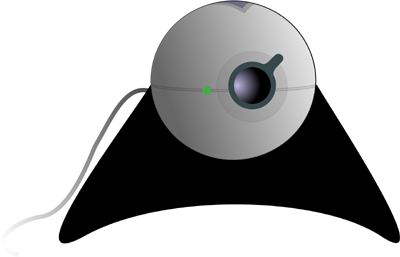 Although I am looking forward to the day when all medical professionals offer electronic consults, the telehealth-telemedicine industry is already having us form a new habit, should we choose to accept what it is pushing. Their business model saves provider overhead, saves the government emergency visit costs for patients who get government subsidies, but the patient pays the same as before. As are many infrastructures, this one is abusive.
Although I am looking forward to the day when all medical professionals offer electronic consults, the telehealth-telemedicine industry is already having us form a new habit, should we choose to accept what it is pushing. Their business model saves provider overhead, saves the government emergency visit costs for patients who get government subsidies, but the patient pays the same as before. As are many infrastructures, this one is abusive. Does your doctor work for a pharmaceutical company? Did you know that some are commissioned to recruit patients for a new drug, getting paid per each head brought to the study? They are also trained to educate other doctors about the possible benefits of the drug so that other doctors will recruit patients to take the drug. Don’t know for sure, but I suspect that the educating doctor gets a cut of the stipend that every other doctor gets for bringing patients to the study. If this is the structure, it is multi-level marketing which I firmly believe in. But, in medicine, might there be agendas pushing prescribing techniques?
Does your doctor work for a pharmaceutical company? Did you know that some are commissioned to recruit patients for a new drug, getting paid per each head brought to the study? They are also trained to educate other doctors about the possible benefits of the drug so that other doctors will recruit patients to take the drug. Don’t know for sure, but I suspect that the educating doctor gets a cut of the stipend that every other doctor gets for bringing patients to the study. If this is the structure, it is multi-level marketing which I firmly believe in. But, in medicine, might there be agendas pushing prescribing techniques?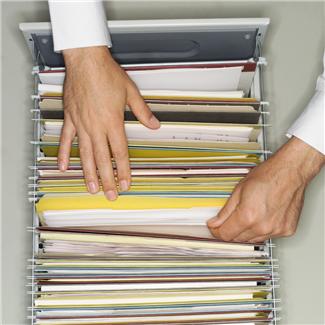 Doctors and health professionals only get to see a summary of abstracts or the full abstract if they pay for a medical journal subscription that houses the abstract. The abstract is some editor’s summation of facts which may not reflect study results. How weird that drug study results are not open to patients. We’re the ones who have to decide to take them or not. These data are also not open to doctors. Should we just say,
Doctors and health professionals only get to see a summary of abstracts or the full abstract if they pay for a medical journal subscription that houses the abstract. The abstract is some editor’s summation of facts which may not reflect study results. How weird that drug study results are not open to patients. We’re the ones who have to decide to take them or not. These data are also not open to doctors. Should we just say,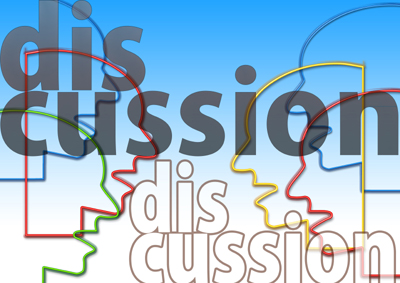 7a)
7a)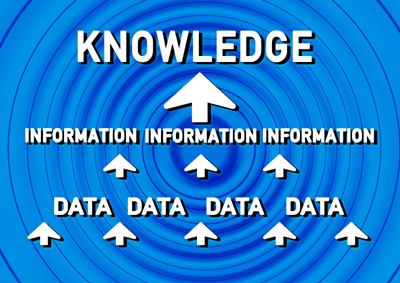 If you have no insurance, ask the provider’s office person for what you will be responsible if you have a routine visit, an x-ray, anything else commonly done in your type of provider’s office. Of course, the office person will say s/he won’t know until afterwards. At this point, mention that you are asking for the cost for an office visit and 3 x-rays. If you don’t have the x-rays, you can deduct that amount. Also, if you have no insurance, request of the office personnel that they request of the provider to be permitted to pay the allowed amount paid by people on an in-network insurance plan. Sometimes, they will have mercy. But, if you don’t ask, you’ll never know.
If you have no insurance, ask the provider’s office person for what you will be responsible if you have a routine visit, an x-ray, anything else commonly done in your type of provider’s office. Of course, the office person will say s/he won’t know until afterwards. At this point, mention that you are asking for the cost for an office visit and 3 x-rays. If you don’t have the x-rays, you can deduct that amount. Also, if you have no insurance, request of the office personnel that they request of the provider to be permitted to pay the allowed amount paid by people on an in-network insurance plan. Sometimes, they will have mercy. But, if you don’t ask, you’ll never know.
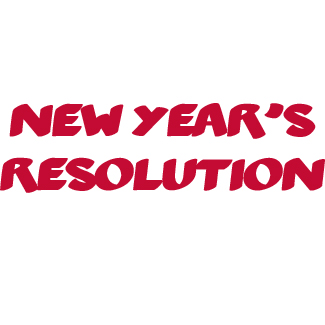
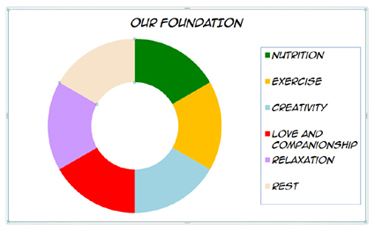 We, as humans, have a variety of requirements. To be at our best, we need a balanced infrastructure to support us. The simple version of this concept is that we need great nutrition, a little exercise, a way to be creative, love and companionship, daily relaxation, enough rest and a place to do this in. Each of us has a little bit different make-up and needs more or less in each of these areas, depending upon who we are.
We, as humans, have a variety of requirements. To be at our best, we need a balanced infrastructure to support us. The simple version of this concept is that we need great nutrition, a little exercise, a way to be creative, love and companionship, daily relaxation, enough rest and a place to do this in. Each of us has a little bit different make-up and needs more or less in each of these areas, depending upon who we are.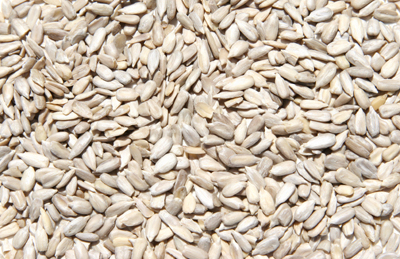

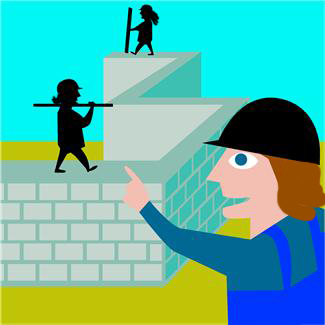
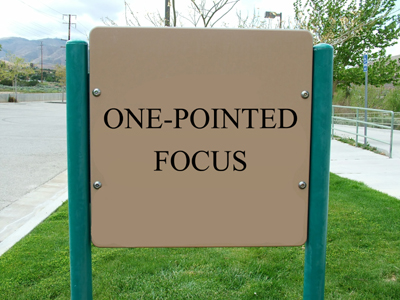
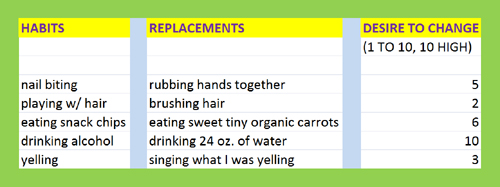
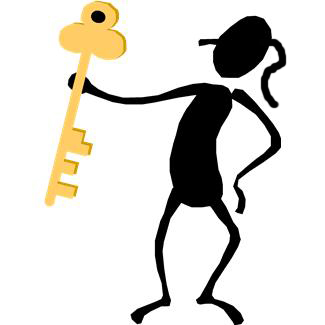 To succeed at our New Year’s Resolution Habit Change, repetition is key. Whatever our new behavior, it must be repeated for a good 3-week period as a humble beginning. I just read an article saying how 21 days to change a habit is a myth, and 66 days is more realistic. If you’re like me, it can take 90-180 days to take hold, and repetition is still necessary on a daily basis after that.
To succeed at our New Year’s Resolution Habit Change, repetition is key. Whatever our new behavior, it must be repeated for a good 3-week period as a humble beginning. I just read an article saying how 21 days to change a habit is a myth, and 66 days is more realistic. If you’re like me, it can take 90-180 days to take hold, and repetition is still necessary on a daily basis after that.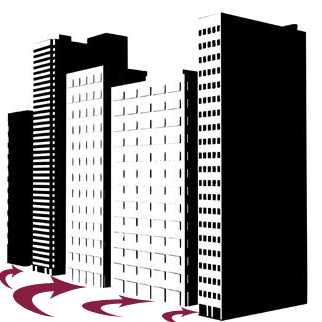


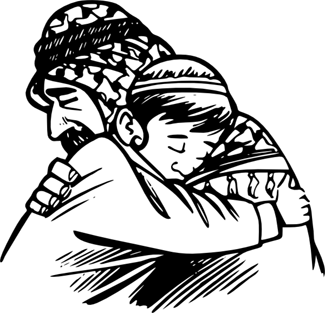 Forgiveness author, Smedes, quotes,
Forgiveness author, Smedes, quotes,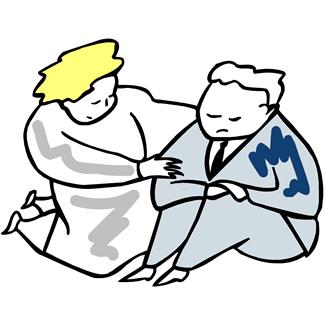
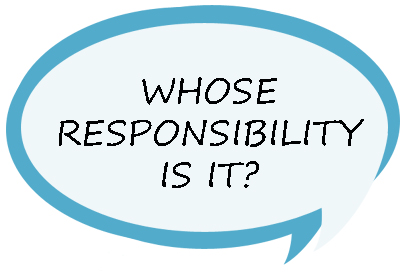 As we all know, we feel more than one thing at once, such as anger and vulnerability or happiness and confidence. Next to these emotions, we place responsibility for our being hurt on someone; often we put it on ourselves. Other times, we put it on the person or group who created the hurtful situation.
As we all know, we feel more than one thing at once, such as anger and vulnerability or happiness and confidence. Next to these emotions, we place responsibility for our being hurt on someone; often we put it on ourselves. Other times, we put it on the person or group who created the hurtful situation.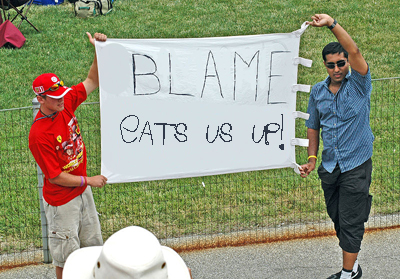 The reason it’s so important to forgive is because blame eats us up. We may think that if we mortally hurt the responsible person, we will be healed. This is one of our baser instincts that is worth looking at. It’s not legal to wound someone, so it’s not a solution. It’s not moral to wound someone. It’s not wise to stoop to the bad behaviors of others. This is where forgiveness comes in.
The reason it’s so important to forgive is because blame eats us up. We may think that if we mortally hurt the responsible person, we will be healed. This is one of our baser instincts that is worth looking at. It’s not legal to wound someone, so it’s not a solution. It’s not moral to wound someone. It’s not wise to stoop to the bad behaviors of others. This is where forgiveness comes in.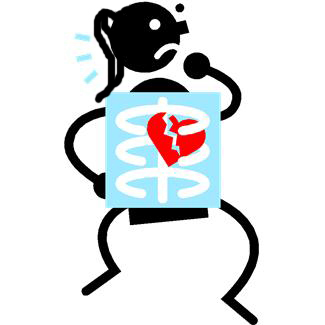 When people lash out and hurt us, they are insecure, self-absorbed, immature, impatient, fearful and hurt from a broken heart. They have become this way because someone has taken a part of their life, and they have not been able to forgive it. Do they always know it? No. In the odd cases where this is not the case, the individual is usually broken in some other way.
When people lash out and hurt us, they are insecure, self-absorbed, immature, impatient, fearful and hurt from a broken heart. They have become this way because someone has taken a part of their life, and they have not been able to forgive it. Do they always know it? No. In the odd cases where this is not the case, the individual is usually broken in some other way.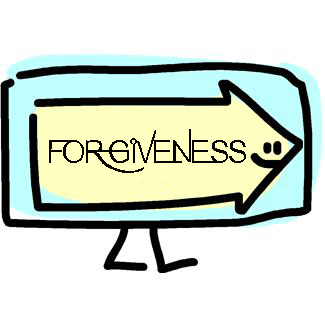 ere are some action steps that may lead us to begin the path of forgiveness. It is not impossible, no matter what it feels like. It’s like any other habit that requires a starting point and constant repetition. In the spirit of any holiday that may have to do with forgiveness, these action steps may be surprisingly useful.
ere are some action steps that may lead us to begin the path of forgiveness. It is not impossible, no matter what it feels like. It’s like any other habit that requires a starting point and constant repetition. In the spirit of any holiday that may have to do with forgiveness, these action steps may be surprisingly useful.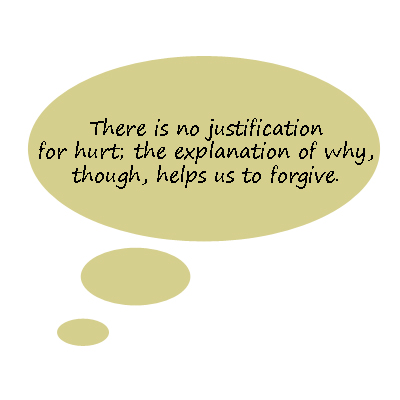
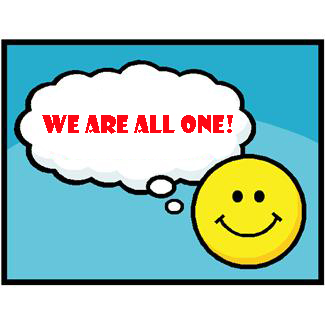

 “Speak out,”
“Speak out,” What transpired for various reasons has been a culture of speakers with no solutions, many just “orating for ego” (good T-shirt). Since there has not been a focus solving vs. complaining in modern times, it is more common to hear groups of complainers than groups of problem solvers. Plus, it’s more difficult to create than to condemn (another good T-shirt, “create, don’t condemn”).
What transpired for various reasons has been a culture of speakers with no solutions, many just “orating for ego” (good T-shirt). Since there has not been a focus solving vs. complaining in modern times, it is more common to hear groups of complainers than groups of problem solvers. Plus, it’s more difficult to create than to condemn (another good T-shirt, “create, don’t condemn”).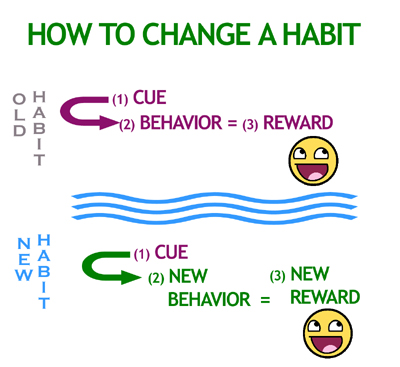 In order to solve vs. complain, we follow the process for any habit change: cue, replace the old action, reward.
In order to solve vs. complain, we follow the process for any habit change: cue, replace the old action, reward.
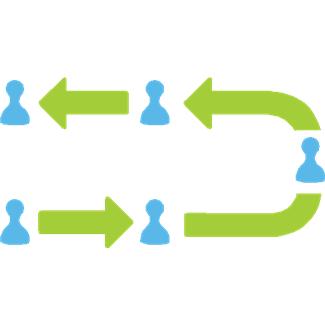
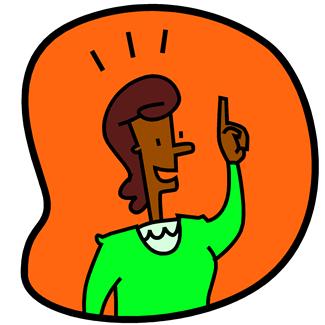 Now that we are evolved enough to understand this, it is time to consider the solution process with every speech. We may have to change our habit, if we are used to being critical, not constructive. We can certainly slap the wrist of education for lack of emphasis on oration without solution. And we can change how we educate from now on.
Now that we are evolved enough to understand this, it is time to consider the solution process with every speech. We may have to change our habit, if we are used to being critical, not constructive. We can certainly slap the wrist of education for lack of emphasis on oration without solution. And we can change how we educate from now on.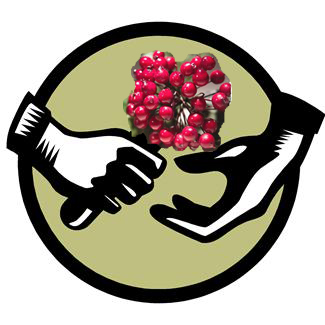
 I saw a photo and exercise routine one of my (actual) friend’s shared on a social networking site. My friend is an avid athlete and 30-year yogi, which means she is strong and fit. She communicates with many people who are also strong and fit. So when she shared a plank photo and instructions for a plank exercise, starting with 20 seconds per day, she was probably directing it to the fit crowd. I immediately responded to her post with an
I saw a photo and exercise routine one of my (actual) friend’s shared on a social networking site. My friend is an avid athlete and 30-year yogi, which means she is strong and fit. She communicates with many people who are also strong and fit. So when she shared a plank photo and instructions for a plank exercise, starting with 20 seconds per day, she was probably directing it to the fit crowd. I immediately responded to her post with an  Most people are attracted to an interesting workout photo that gets passed around. What was missing, and I’m not pointing fingers, was a super big warning sign. Having owned an active martial arts school for over 15 years, I have heard many stories about injury due to improper workout. I have helped show many a newbie student why proper alignment is everything and that haste can cost precious training time as we heal from beginner, didn’t-follow-directions injuries.
Most people are attracted to an interesting workout photo that gets passed around. What was missing, and I’m not pointing fingers, was a super big warning sign. Having owned an active martial arts school for over 15 years, I have heard many stories about injury due to improper workout. I have helped show many a newbie student why proper alignment is everything and that haste can cost precious training time as we heal from beginner, didn’t-follow-directions injuries.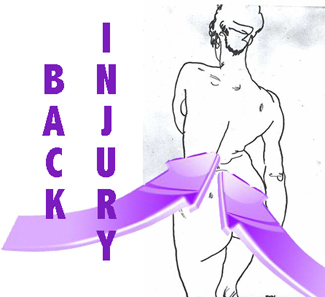 It is extremely easy to hurt the back doing the plank exercise, even though it is a wonderful technique if we have the abs for it. It’s whether or not they are strong enough to hold our entire body upon command. And that is what today’s exercise is about. Back Injury
It is extremely easy to hurt the back doing the plank exercise, even though it is a wonderful technique if we have the abs for it. It’s whether or not they are strong enough to hold our entire body upon command. And that is what today’s exercise is about. Back Injury Most of us want efficiency and want the shortest road toward what we consider perfection that we can take. That means we would like to bypass any frills and get right to the real work. Yet, some exercises, worldwide, put, at least, 50% fluff in them.
Most of us want efficiency and want the shortest road toward what we consider perfection that we can take. That means we would like to bypass any frills and get right to the real work. Yet, some exercises, worldwide, put, at least, 50% fluff in them.